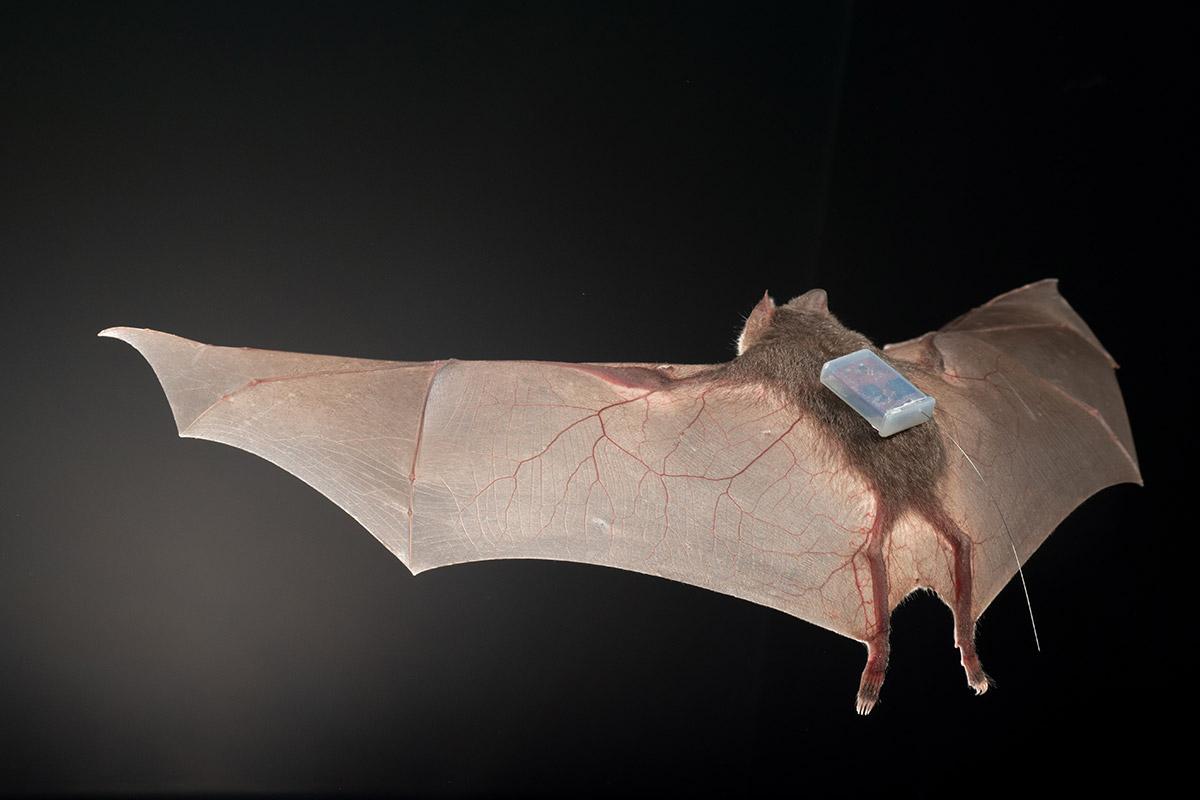Press Release, 25.11.2019
A research team led by the Friedrich-Alexander-University Erlangen-Nuremberg (FAU), in which the Museum für Naturkunde Berlin, the Technische Universität Braunschweig, the University of Paderborn, the Brandenburgische Technische Universität Cottbus-Senftenberg, the University of Bayreuth and the Fraunhofer Institute for Integrated Circuits IIS are involved, presented the bat tracking system BATS, which collects social contacts between free-living animals for the analysis of social networks fully automatically and to the second. How resilient are friendships between vampire bats? How does a young evening sailor learn to hunt? How fast does the heart of a flower bat beat? And why do researchers want to know that?
The research group "BATS - a Broadly Applicable Tracking System", funded by the German Research Foundation (DFG) and led by the FAU, developed a completely new and high-performance wildlife observation system in an interdisciplinary team from the fields of electronics, computer science and biology that allows research in unprecedented detail and even on such small animals as bats.
Technological innovation drives biological research. The BATS system, an "Internet of Animals", collects social contacts between free-living animals fully automatically and to the second for the analysis of social networks, observes high-resolution trajectories in dense forests and at the same time counts the rapid pulse of the animals. The central goal is to advance wildlife research worldwide with technologies "made in Germany" in order to sustainably protect nature. Understanding the behaviour of wild animals means laying the foundations for successful nature conservation.
The animals carry small transmitters with the functionality of a network computer: data is transmitted, received, processed, stored and all this at a sensor weight of only one gram - including autonomous energy supply. The decisive factor here is that the sensor does not impair the normal behaviour of the bats. As soon as an animal passes a base station, for example in its quarters, the stored data is automatically downloaded.
"Just a few years ago it was inconceivable to collect such high-resolution data on entire social groups of free-living bats," says Dr. Simon Ripperger, a scientist at the Museum für Naturkunde Berlin who tested new technological developments in the field. From his doctoral thesis, however, he also knows the classical methods when he had to follow individual bats on foot by radiotelemetry. "The recipe for success for the technological quantum leaps that made our almost seven years of work possible was the close interdisciplinary cooperation between researchers from the fields of technology in Erlangen and biology in Berlin," adds Prof. Dr. Dr. Robert Weigel, spokesperson of the research group and member of the FAU's Chair of Technical Electronics. Part of the project were joint field trips of the BATS team to Franconian Switzerland, Berlin and the tropical rainforest in Panama to observe bats.
"In the future, the application should not be restricted to bats," says Prof. Weigel, "we also want to market BATS and are planning a spin-off. In addition to observing other vertebrate groups in the field, such as birds or lizards, BATS also offers the possibility of investigating the behaviour of farm animals in agriculture in order to monitor animal health or improve husbandry conditions in the future.
The DFG research group 1508 BATS includes the FAU, the Museum für Naturkunde Berlin, the Technical University Braunschweig, the University of Paderborn, the Brandenburg Technical University Cottbus-Senftenberg, the University of Bayreuth and the Fraunhofer Institute for Integrated Circuits IIS.
Download image material for media:
http://download.naturkundemuseum-berlin.de/presse/Vampirfledermaus
Please indicate the corresponding image sources when publishing - they are noted together with further image information directly in the IPTC data.
